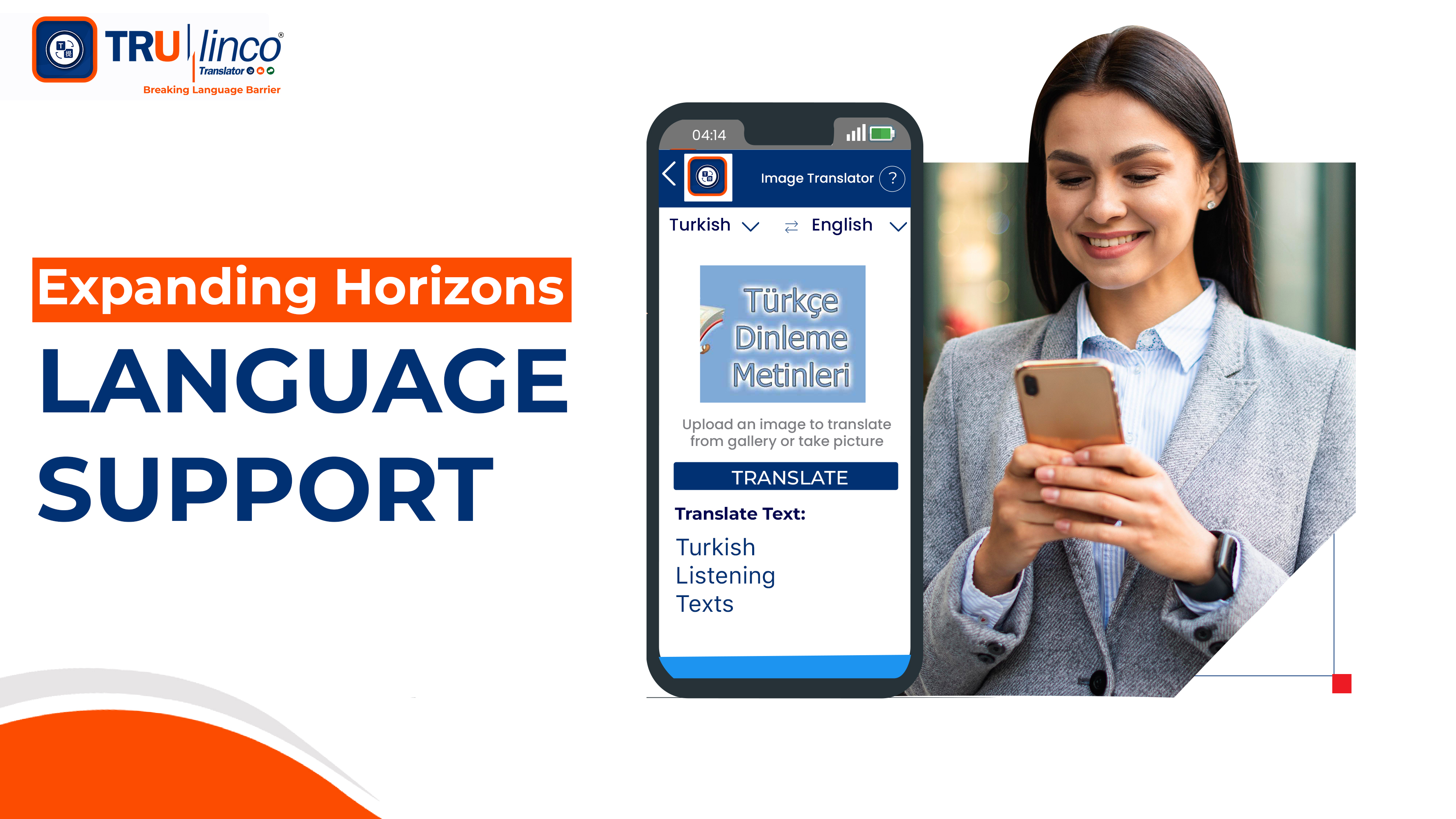
Welcome to a world where communication knows no bounds and language barriers are mere stepping stones to new adventures! In our global village, diversity reigns supreme, with languages weaving a vibrant tapestry of cultures, ideas, and experiences. But what happens when these linguistic threads intersect, and understanding becomes lost in translation?
Enter the realm of technology, where innovation reigns supreme and barriers are meant to be broken. In this digital age, we are witnessing a revolution—a revolution fueled by the power of language support. From real-time translation marvels to language learning wizardry, technology is rewriting the rules of communication, one pixel at a time.
Amidst this whirlwind of innovation, one star shines bright: image translation. Picture this: you’re exploring the bustling streets of Tokyo, marveling at the neon signs and colorful characters that adorn every corner. Suddenly, you stumble upon a menu that seems straight out of a Japanese fairy tale—kanji characters dancing across the page like poetry. Fear not, dear traveler, for with the swipe of a finger, you can unlock the secrets hidden within those intricate symbols.
But image translation is more than just a magic wand for deciphering foreign text—it’s a gateway to new worlds, new experiences, and new connections. It’s the tool that transforms language barriers into bridges, opening doors to untold adventures and forging bonds that transcend borders.
In this article, we invite you to join us on a journey—a journey through the vast landscape of language support, guided by the beacon of image translation. Together, we’ll explore the challenges of cross-cultural communication, the role of technology in overcoming linguistic barriers, and the boundless potential of image translation to revolutionise the way we connect with the world.
So, buckle up and prepare for a ride unlike any other—a ride where language is no longer a barrier, but a beacon guiding us towards a future where communication knows no bounds. Welcome to the age of expanding horizons—welcome to the world of language support, reimagined.
Understanding Language Barriers
Navigating the Tower of Babel:
Imagine a world where every conversation feels like a puzzle, with pieces missing and meanings lost in translation. Language barriers are more than just words lost in transit; they’re barriers to understanding, empathy, and connection. From the subtle nuances of tone and gesture to the intricacies of cultural context, navigating these barriers can feel like scaling the mythical Tower of Babel—a daunting task that requires patience, persistence, and a touch of magic.
Lost in Translation: Impact on Daily Life:
Language barriers cast a wide net, affecting various aspects of our lives in ways both big and small. Consider the intrepid traveler, wandering through foreign lands with a phrasebook in hand, only to find themselves lost in a sea of unfamiliar words and gestures. Or the ambitious entrepreneur, seeking to expand their business into global markets, only to encounter communication roadblocks at every turn. Even in the classroom, language barriers can hinder learning, creating gaps in understanding and inhibiting academic progress.
Want to know How to Translate Text from Images? Read More
The Role of Technology
Breaking Down Walls with Tech:
In the age of smartphones and smart homes, technology has become our trusty sidekick in the quest for cross-cultural communication. From the humble beginnings of language translation software to the cutting-edge advancements of today, technology has been instrumental in bridging language gaps and connecting people across borders. With the tap of a screen or the click of a button, we can now communicate with the world at our fingertips, breaking down walls and building bridges where language once stood in the way.
Enter the Heroes: Real-Time Translation Tools:
In the ever-expanding arsenal of language support tools, real-time translation stands out as a true hero. With the ability to translate spoken words on the fly, these tools have revolutionized the way we communicate in multilingual settings. Whether it’s a business meeting with international partners or a casual conversation with a stranger in a foreign land, real-time translation tools empower us to bridge the gap between languages and connect on a deeper level.
Looking for Best Yandex translate alternative? Try Trulinco
The Rise of Image Translation:
But what if words aren’t enough? Enter image translation—a game-changer in the world of language support. With the power to decipher text within images, this innovative solution opens up a world of possibilities for overcoming language barriers. From translating street signs and menus to decoding handwritten notes and ancient manuscripts, image translation technology is breaking new ground in the quest for global understanding.
In the ever-evolving landscape of language support, technology continues to be our greatest ally, empowering us to break down barriers, build bridges, and connect with the world in ways we never thought possible. So, as we journey forward into the brave new world of cross-cultural communication, let us embrace the tools at our disposal and celebrate the boundless potential of technology to unite us all.
Want to know the Easiest Way to Translate Images in 2024? Check detailed guide
Understanding Image Translation
Image translation is a cutting-edge technology that enables the conversion of text within images from one language to another. Unlike traditional translation methods that focus solely on textual content, image translation processes the visual elements of an image, including text, symbols, and graphics, to provide accurate translations.
This innovative approach not only enhances the accessibility of content but also addresses the limitations of text-based translation, particularly in scenarios where textual context is intertwined with visual elements.
Looking for Best Google Translate Alternative? Try Trulinco
Trulinco Image Translation Feature
Among the pioneers in image translation technology is Trulinco, a leading provider of language translation services. Trulinco’s image translation feature leverages state-of-the-art algorithms to accurately translate text within images across multiple languages.
By simply uploading an image containing text, users can seamlessly translate the text into their desired language, eliminating the need for manual transcription or text extraction. This feature is available through Trulinco’s user-friendly platform, making it accessible to a wide range of users.
Looking for Best Translation Tool for Your Business? Try Trulinco, Real time Language Translator
Advantages of Image Translation Over Text-Based Translation
Comparison of image translation with traditional text-based translation methods:
Image translation offers several advantages over traditional text-based translation methods. While text-based translation relies solely on converting written words from one language to another, image translation utilises advanced algorithms to analyze and interpret visual content, providing a more comprehensive understanding of the context. Additionally, image translation can overcome language barriers for individuals who are illiterate or have difficulty reading.
Advantages of image translation in specific contexts:
- Accessibility: Image translation facilitates communication for individuals with limited literacy or visual impairments, allowing them to understand content that would otherwise be inaccessible through text-based translation alone.
- Multimodal Communication: Image translation enhances communication by combining visual and textual elements, catering to diverse learning styles and preferences.
- Cultural Sensitivity: Image translation considers cultural nuances and visual cues, ensuring accurate and culturally appropriate translations that may be missed in text-only translations.
Real-life examples showcasing the superiority of image translation:
- Travel: Imagine travelling to a foreign country and needing to understand signage, menus, or directions. Image translation apps can instantly translate text in images, making navigation and communication seamless.
- Education: In educational settings, image translation aids students in understanding visual content such as diagrams, charts, and presentations, regardless of language barriers.
- Healthcare: Image translation can assist healthcare professionals in interpreting medical records, prescriptions, and diagnostic images, facilitating communication with patients from diverse linguistic backgrounds.
Check Trulinco – The Ultimate Real-Time Chat Translator
Challenges and Limitations
Potential challenges and limitations of image translation technology:
- Accuracy: Image translation algorithms may struggle with complex or ambiguous visual content, leading to inaccuracies in translation.
- Technical Constraints: Image translation may require high-quality images and stable internet connections, limiting its effectiveness in certain environments.
- Language Support: Image translation technology may not support all languages equally, leading to disparities in translation quality for less commonly spoken languages.
Strategies to overcome these challenges:
- Continuous Improvement: Developers can refine image translation algorithms through machine learning and feedback mechanisms to enhance accuracy over time.
- User Education: Educating users on best practices for capturing and selecting images for translation can improve the quality of input data and enhance translation outcomes.
- Collaboration: Collaborating with linguists, cultural experts, and users from diverse backgrounds can help address cultural and linguistic nuances, improving the accuracy and relevance of translations.
Future Prospects and Advancements in Image Translation Technology:
- Integration with Augmented Reality (AR): Image translation technology can be integrated with AR applications to provide real-time translations overlaid on physical objects, further enhancing accessibility and convenience.
- Enhanced Multimodal Translation: Future advancements may enable image translation systems to analyse and interpret complex visual scenes, including gestures, facial expressions, and contextual cues, for more nuanced translations.
- Expansion of Language Support: Continued research and development efforts can expand language support for image translation, making the technology more inclusive and accessible to speakers of diverse languages.
By addressing these challenges and leveraging future advancements, image translation technology can continue to break down language barriers and facilitate seamless communication across cultures and languages.
Want to Integrate Real time Language Translator? Contact Trulinco Now!
Conclusion
In conclusion, image translation represents a significant advancement in language support, offering a versatile solution for overcoming linguistic barriers in an interconnected world. With its ability to accurately translate text within images across multiple languages, image translation holds immense potential for facilitating communication and fostering cultural exchange on a global scale.
As technology continues to evolve, the future of language support through image translation looks promising, with innovations such as Trulinco’s image translation feature paving the way for seamless and accessible language translation experiences.

